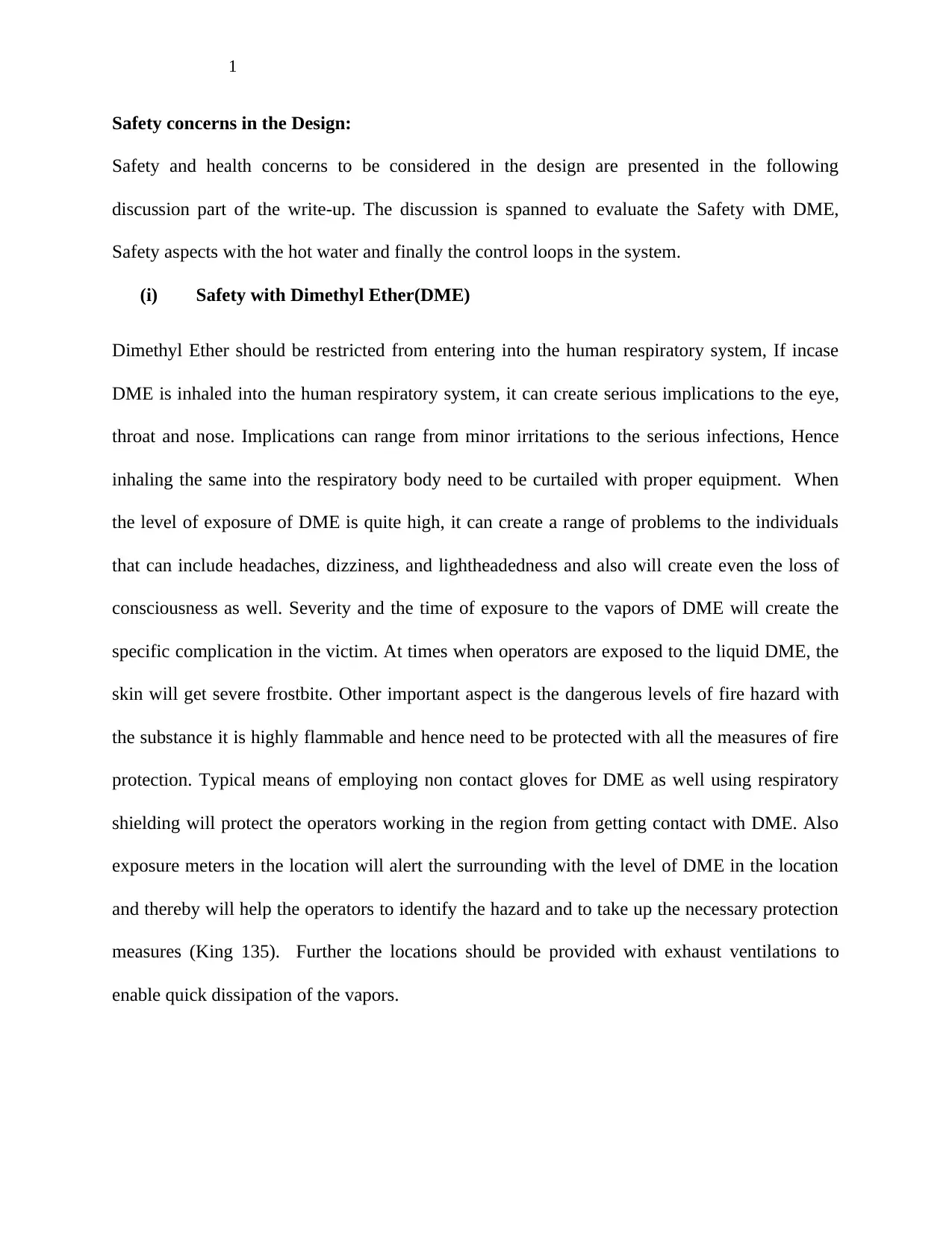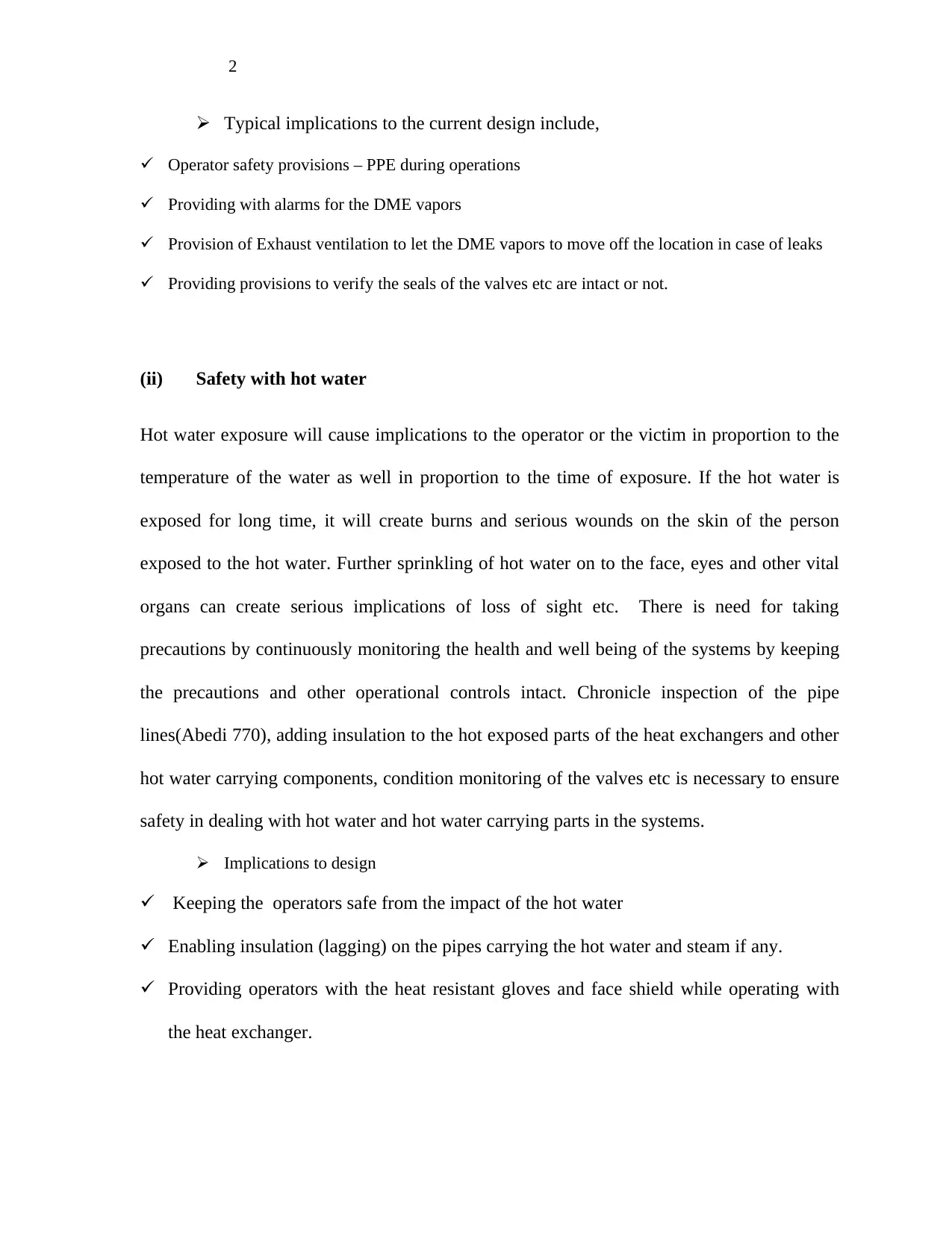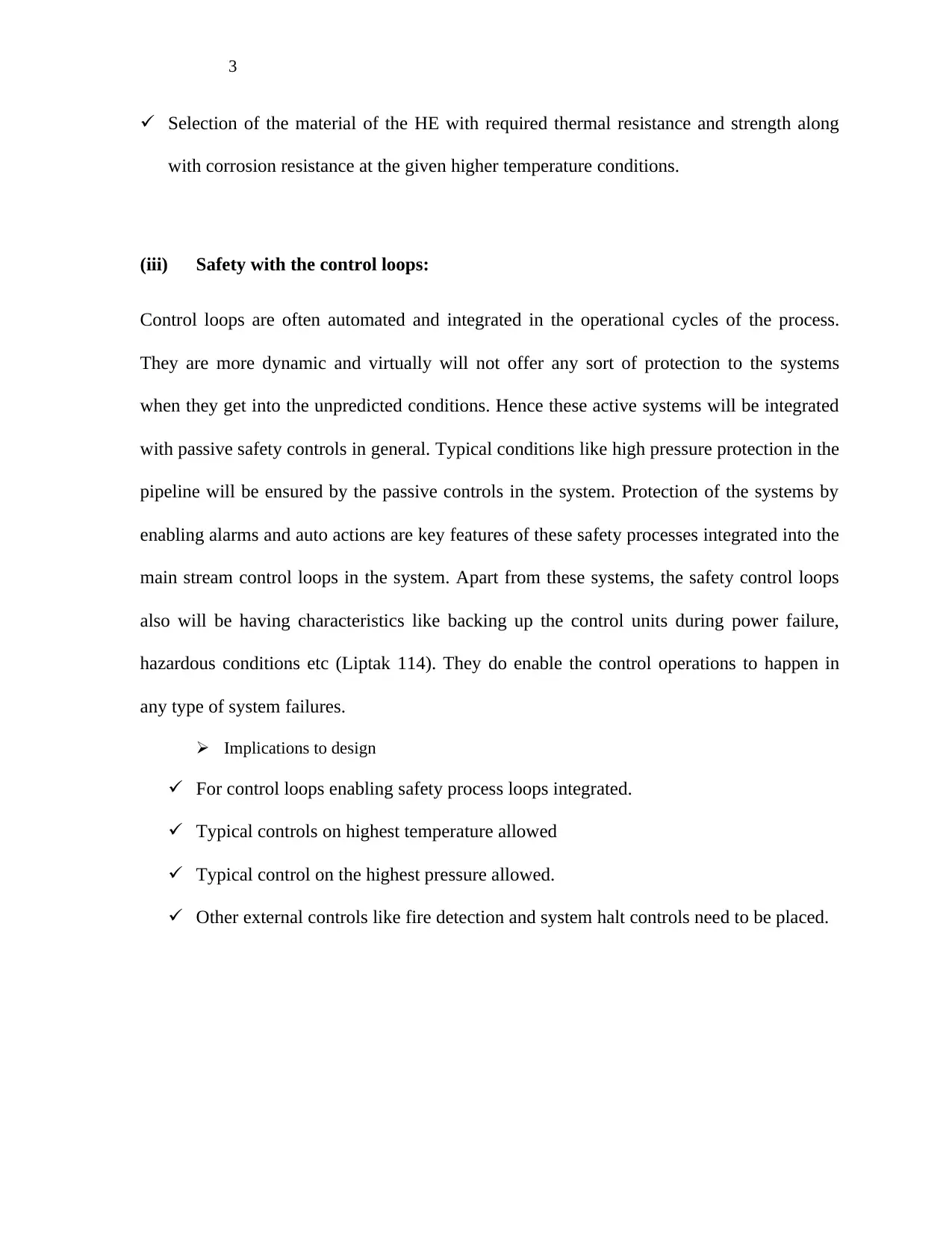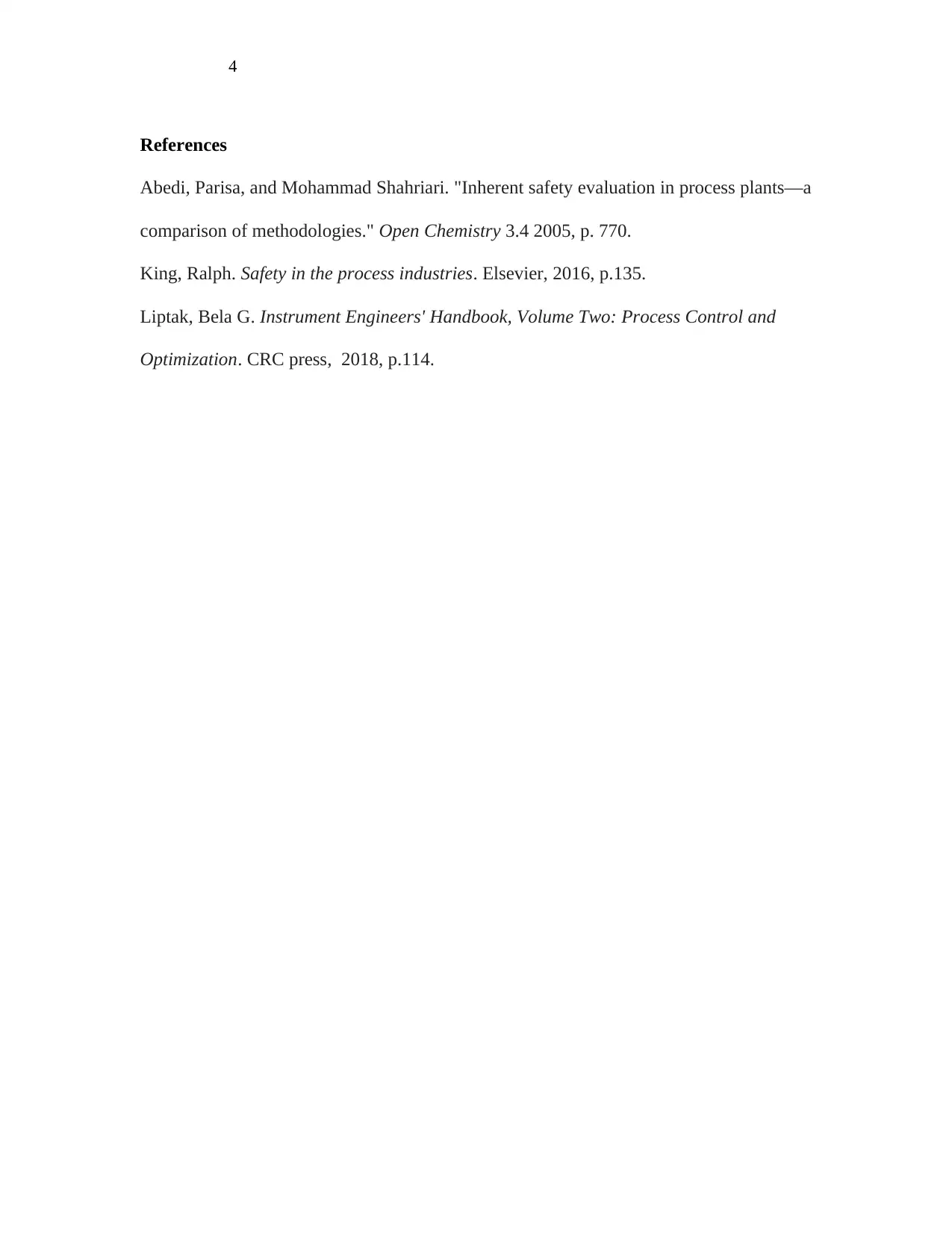Heat Exchanger Design and Safety Analysis: DME Production Report
VerifiedAdded on 2022/11/07
|4
|902
|411
Report
AI Summary
This report presents a detailed analysis of a heat exchanger design for the production of dimethyl ether (DME) from methanol, with a target output of 250,000 gallons per day. The primary objective is to design a heat exchanger to cool a mixture of DME, water, and methanol from 280°C to 98°C. The report emphasizes safety considerations throughout the design process, addressing potential hazards associated with DME, such as inhalation risks and flammability, and outlining safety measures like PPE, ventilation, and vapor detection. It also covers safety protocols related to hot water exposure, including insulation, protective gear, and material selection. Furthermore, the report discusses the integration of control loops within the system, highlighting the need for both active and passive safety controls, including alarms, automated actions, and backup systems to ensure operational safety during various failure conditions. The design parameters, including shell and tube specifications, tube materials, flow rates, and the importance of continuous monitoring and inspection, are also detailed. References to relevant literature are included to support the analysis.
1 out of 4





![[object Object]](/_next/static/media/star-bottom.7253800d.svg)